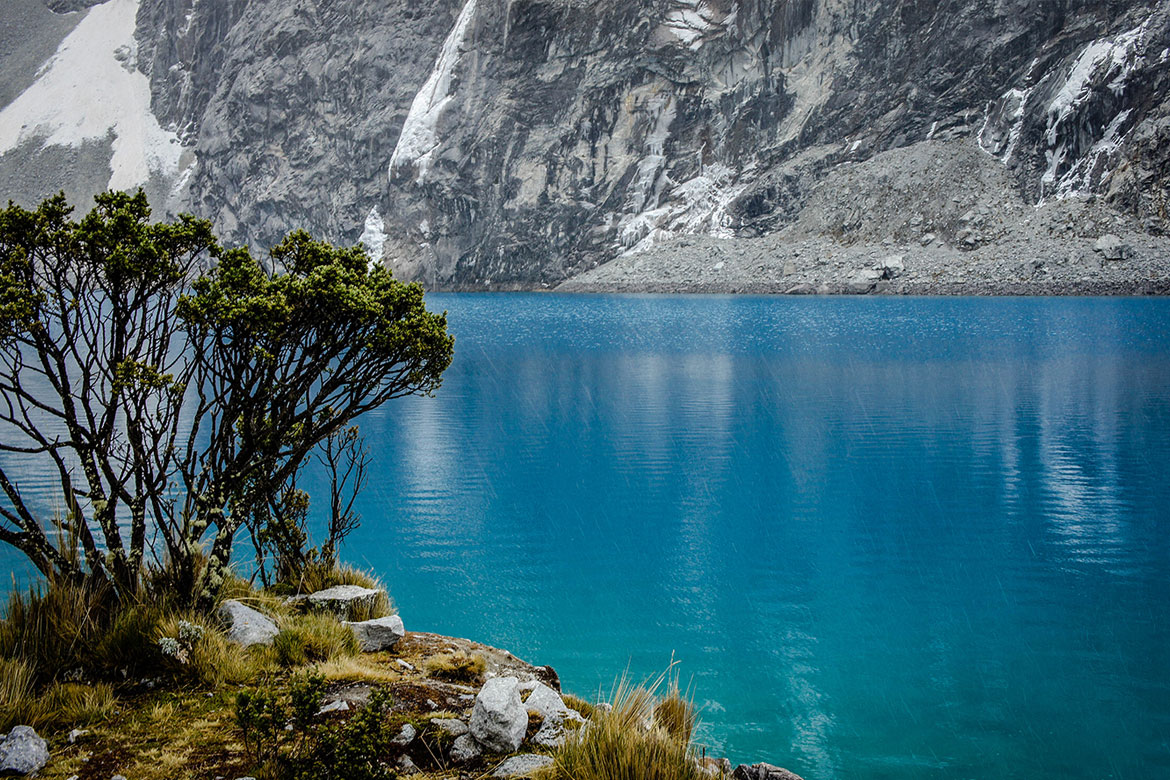Peru is a large producer of water due to its geographical configuration and extensive coast, including the Andes mountain chain, which with its high altitude and abrupt geomorphology has contributed to water distribution. This combination in addition to climatic factors has generated a large number of microclimates and ecosystems in the country. Today, even the coastal region, predominantly a desert throughout its 2000 kilometers in length, is crossed by approximately 20 large rivers that empty out into the Pacific Ocean, and by others with a smaller hydrographic magnitude, forming alluvial valleys and creating large extensions of fertile land in the coast. Large rivers in the Amazon basin include the Marañón, Huallaga and Ucayali, which run towards the Atlantic global basin. Another basin is the Titicaca, which added to the Pacific and Atlantic, provide three large basins within Peru’s territory – a unique and enviable situation for any country.
The country has abundant water representing approximately 2 Billon m3 per year, ranking eight worldwide in water resources. However, Peru utilizes only approximately 1% of its total water resources, with agriculture being its largest water uses at 80%, followed by population use at 12%, the industrial sector at 6% and mining at 2%.
Given minimal water usage, there is a large group of the population in Peru that lacks basic services related to this resource, and this has caused many environmental and social related conflicts in the country. While these conflicts have and are often blamed on the development of mining or other large projects, the water problem is in reality caused by the lack of adequate storage, distribution and rationalization, as well as by the lack of proper mechanisms to ensure that good water quality is maintained. Another issue is that there is no adequate treatment or potabilization of water for those populations with a growing demographic index. Cities such as Piura and Trujillo in the north, and Lima, the capital, have a deficit of potable water and have outgrown their drainage systems, creating social health and environmental problems. Another problem mentioned by the various companies in the water treatment business in Peru is that the higher the degree of contamination from rivers is, the more expensive and complex that it becomes to treat such waters. There is an unfounded reliance on the environmental culture of the communities which make use of the waters “up the river” which is presently not working, as water from rivers which is to be used for human consumption has been found to contain organic waste and heavy metals.
While there are various important irrigation projects, dams and water channel systems in the works, such as Chinecas, Chavimochic and Olmos among others, not much attention appears to have been placed in the areas where water is produced, that is, in high altitude areas where there is a higher collection of water through precipitation and filtration. For example, large projects such as Chinecas and Chavimochic are fed by water from the Santa River which is born at over 4000 meters over sea level at the Conocoha lake, in the Ancash region, initiating its path with a low water level and increasing it as it passes through the Huaylas hallway, where the water is used for electricity generation of an important hydro electrical plant, ending up in the coastal valley of Santa, near Chimbote. The Santa River’s largest water contribution comes from its path along the well-known White and Black Mountain Range, the first of which has over 600 glaciers.
The point is that Peru would be better off focusing not only on the use and efficiency of the largest water producing sources and collector areas in the country, but also in ensuring an adequate supply throughout the path of its rivers, with integral programs able to interconnect one or more regions, programs to properly manage the technical aspects of the large water basins, including reforestation at a regional and national level, as well as placing emphasis on improving the environmental culture of all of those affecting its important and large watershed. Given that water is such an important source of life, its adequate production and use will support the quality of life of future generations, making Peru a sustainable country with an adequate balance between nature and society.




